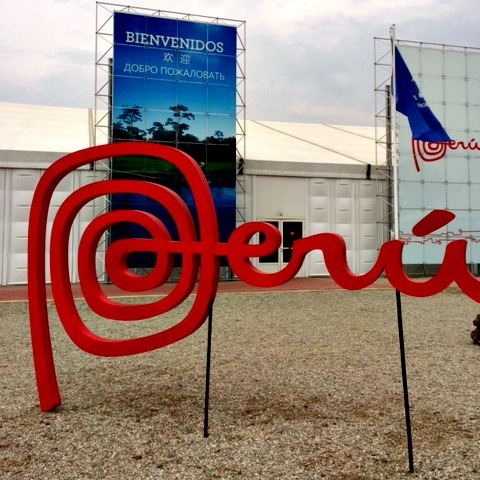On Gender Day at the United Nations Convention on Climate Change (UNFCCC) Conference of the Parties (COP), the Government of Peru, announced that it is ready to take a stand for gender, requesting support from IUCN's Global Gender Office (GGO). Today, Peru pledged its commitment to a Climate Change Gender Action Plan (ccGAP) making it the first country in South America to integrate gender into their national climate policy.
For more than 20 years, gender was absent from the UNFCCC. Now, following years of knowledge-development, advocacy, and capacity building, governments have agreed multilaterally that gender equality is a key component in achieving climate change goals. Because of this, several countries, with the help of IUCN and GGO, have developed ccGAPs and more are following suit. Peru is the 14th country to commit to a ccGAP, with others including Mozambique, Liberia, Nepal, Bangladesh, Cuba and Egypt.
When it comes to developing a ccGAP, there are four steps. The first is to 'take stock' of the country's current situation by analyzing the legislative and policy frameworks, initiatives and stakeholders, and assessing the technical capacity of the country to create a gender-responsive climate change policy. The second step involves 'leveling the playing field' by building the capacity of certain stakeholders to be able to engage in a meaningful way. For most, this means training on climate change for women and women's organization, as well as capacity-building sessions for government and environmental CSOs on the links between gender and climate change. The third step is creating a national workshop where stakeholders, such as governments, civil society, international organizations, academia, and donors are brought together to develop measures that will be included in the gender action plan.
Finally, the ccGAP goes through an official validation process to be approved by the Cabinet or the Ministry and put into action. In some cases, elements of the ccGAP have been included in the country's National Communications to the UNFCCC or in project proposals, such as Mozambique, which used its ccGAP to influence its Pilot Program for Climate Resilience under the World Bank's Climate Investment Funds.
In Peru, the commitment to a ccGAP signifies the countries willingness to promote gender equality by incorporating gender-responsive strategies into climate policy and planning.
"We have chosen to commit to a Climate Change Gender Action Plan because we recognize the importance of gender considerations in climate change policy-making," says Gabriel Quijandría, Deputy Vice-Minister of Environment, Peru, Director
of Peru Delegation, UNFCCC COP 20. "In Peru, we want to include women in high-level decision-making on environmental threats and opportunities, as we know this will increase our odds of success. It is our hope that other countries will follow suit and incorporate ccGAPs into their policy and planning and we are proud to be the first South American country to do so."
IUCN's GGO also recently conducted an Environment and Gender Index (EGI) study in Peru. Out of the 73 countries worldwide that have been reviewed, Peru placed 26th. Some new findings include:
-In Peru, 76% of women work in the informal sector; and 47% are engaged in vulnerable employment, which is a sub-section of the informal sector including unpaid family workers and own-account workers.
-Peru receives perfect scores for equal legal rights of women and men on 11 dimensions including joint marital titling for major assets and inheritance rights of children and spouses and full ratification of the Committee on the Elimination of Discrimination against Women (CEDAW).
-Peru receives the second highest score in the region for Critical Habitat Protection and high scores for women's legal and de facto access to credit and property other than land.
-In Peru's income level group (upper/middle), out of 19 countries, it ranks 7th in the ecosystem category and 5th for gender-based rights and participation.
A total score of 26/73 places Peru in the Moderate Performers Group, however these findings demonstrate an important opportunity to strengthen and substantiate progress on gender-responsive environment and climate policy and implementation.
COP 20 is an important opportunity to continue to build enabling elements of an effective, efficient, and equitable gender-responsive climate change framework. The Government of Peru, particularly as the host of this critical COP, is poised to take leadership on propelling progress and delegates to Peru will have the significant opportunity to provide a mandate for developing a comprehensive framework, including a two-year work program, for implementation of gender provisions. A time-bound work plan will ensure that concrete steps are in place to turn words into action, with impact across all key issues and programs of the UNFCCC. Peru has made great strides incorporating gender considerations into legislation, and moving forward, it should continue to strive to put these policies into practice and take advantage of the opportunities it has to be a leader in mainstreaming gender in climate policy.
